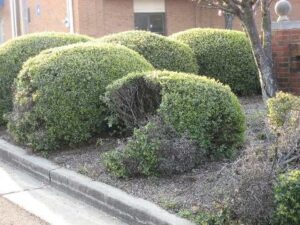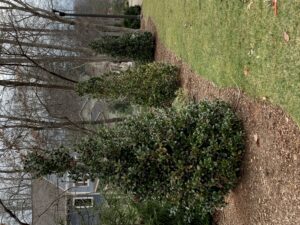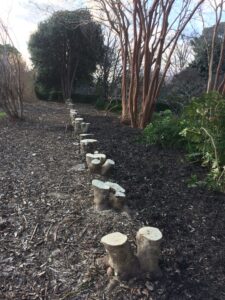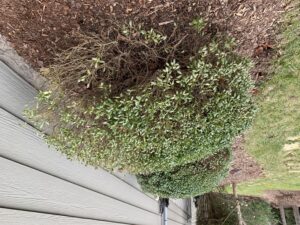Plant Health Alert – Excessive Shearing Stresses Plants
go.ncsu.edu/readext?916134
en Español / em Português
El inglés es el idioma de control de esta página. En la medida en que haya algún conflicto entre la traducción al inglés y la traducción, el inglés prevalece.
Al hacer clic en el enlace de traducción se activa un servicio de traducción gratuito para convertir la página al español. Al igual que con cualquier traducción por Internet, la conversión no es sensible al contexto y puede que no traduzca el texto en su significado original. NC State Extension no garantiza la exactitud del texto traducido. Por favor, tenga en cuenta que algunas aplicaciones y/o servicios pueden no funcionar como se espera cuando se traducen.
Português
Inglês é o idioma de controle desta página. Na medida que haja algum conflito entre o texto original em Inglês e a tradução, o Inglês prevalece.
Ao clicar no link de tradução, um serviço gratuito de tradução será ativado para converter a página para o Português. Como em qualquer tradução pela internet, a conversão não é sensivel ao contexto e pode não ocorrer a tradução para o significado orginal. O serviço de Extensão da Carolina do Norte (NC State Extension) não garante a exatidão do texto traduzido. Por favor, observe que algumas funções ou serviços podem não funcionar como esperado após a tradução.
English
English is the controlling language of this page. To the extent there is any conflict between the English text and the translation, English controls.
Clicking on the translation link activates a free translation service to convert the page to Spanish. As with any Internet translation, the conversion is not context-sensitive and may not translate the text to its original meaning. NC State Extension does not guarantee the accuracy of the translated text. Please note that some applications and/or services may not function as expected when translated.
Collapse ▲There is no accounting for taste. Some people love a style while others hate it. The same can be said of gardening practices such as shearing evergreen plants; either you like a yard that looks like a topiary garden or you dislike seeing plants shorn and shaped into geometric shapes. The fact is that over-shearing plants, that is to say using a hedge shear pruning implement to remove the new growth from a shrub year after year, is detrimental to plant health in the long run.

These cherry laurel shrubs are too close to house.They also are too tall for the area. The cherry laurel can grow 20′ tall and 10′ across. The plants are heavily pruned and over sheared to maintain them at the right height. The plants are therefore stressed and more susceptible to fungal infections. These plants are infested with shot hole fungus disease.
So what do plants have to say about the issue? I think that if they could talk trees and shrubs would prefer not be sheared. Unfortunately plants can’t communicate with us. However, they do exhibit signs of stress induced by poor horticultural practices such as over-shearing.
When you shear a plant you remove the newest leaves. In an evergreen plant, the new leaves are the most productive leaves photosynthetically. Photosynthesis produces the food for the plant’s growth. When you remove the new leaves and leave the old less productive leaves, plants cannot produce enough food to thrive. This causes the plants to get weaker making them more susceptible to problems. Sheared plants are less healthy and shorter lived than naturally maintained plants.
Shearing also encourages dense leaf and branch production at the ends of branches. The dense branching and leaves shades the interior of the plants. The leaves inside of the plant are shed because of the lack of light inside the plant canopy. Over time sheared evergreen plants have a shell of leaves on the outside of the plants and no leaves on the inside. This shell of leaves can trap moisture inside the plant and lead for fungal infections.

These heavily sheared Japanese hollies have formed a shell of outer leaves. When the plants eventually start to decline and lose limbs, you get big holes in the plant canopy.
Heavily sheared plants eventually start to decline in health. Limbs die and gaping holes are left in the hedge. Overtime the planting will simply fall apart.
Can you shear plants in a way that keeps plants healthy? If you mush shear a plant, leave some of the new growth intact. This means the plant will get larger and larger over time. Eventually the plants may over grow the planting. In this case, the evergreen shrubs can be renewed by cutting them back to stumps and letting the plants regrow all new branches. Fertilize sheared plants annually and water them during periods of drought.

These newly planted hollies should be allowed to get larger. There is no need to maintain them at the same height forever. ‘Nellie R. Stevens’ hollies can reach a height of 30′ and a width of 25′.






